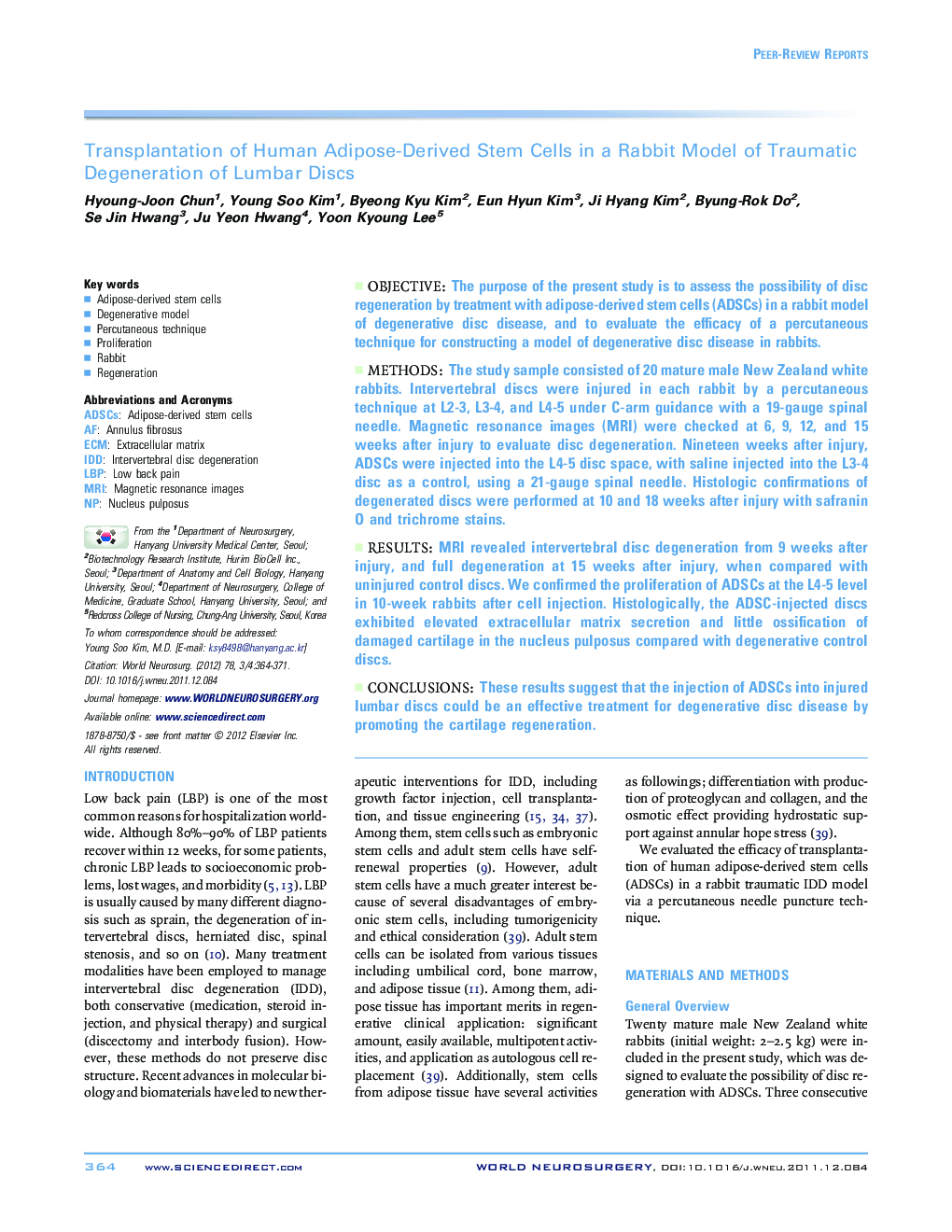| Article ID | Journal | Published Year | Pages | File Type |
|---|---|---|---|---|
| 3096343 | World Neurosurgery | 2012 | 8 Pages |
ObjectiveThe purpose of the present study is to assess the possibility of disc regeneration by treatment with adipose-derived stem cells (ADSCs) in a rabbit model of degenerative disc disease, and to evaluate the efficacy of a percutaneous technique for constructing a model of degenerative disc disease in rabbits.MethodsThe study sample consisted of 20 mature male New Zealand white rabbits. Intervertebral discs were injured in each rabbit by a percutaneous technique at L2-3, L3-4, and L4-5 under C-arm guidance with a 19-gauge spinal needle. Magnetic resonance images (MRI) were checked at 6, 9, 12, and 15 weeks after injury to evaluate disc degeneration. Nineteen weeks after injury, ADSCs were injected into the L4-5 disc space, with saline injected into the L3-4 disc as a control, using a 21-gauge spinal needle. Histologic confirmations of degenerated discs were performed at 10 and 18 weeks after injury with safranin O and trichrome stains.ResultsMRI revealed intervertebral disc degeneration from 9 weeks after injury, and full degeneration at 15 weeks after injury, when compared with uninjured control discs. We confirmed the proliferation of ADSCs at the L4-5 level in 10-week rabbits after cell injection. Histologically, the ADSC-injected discs exhibited elevated extracellular matrix secretion and little ossification of damaged cartilage in the nucleus pulposus compared with degenerative control discs.ConclusionsThese results suggest that the injection of ADSCs into injured lumbar discs could be an effective treatment for degenerative disc disease by promoting the cartilage regeneration.
